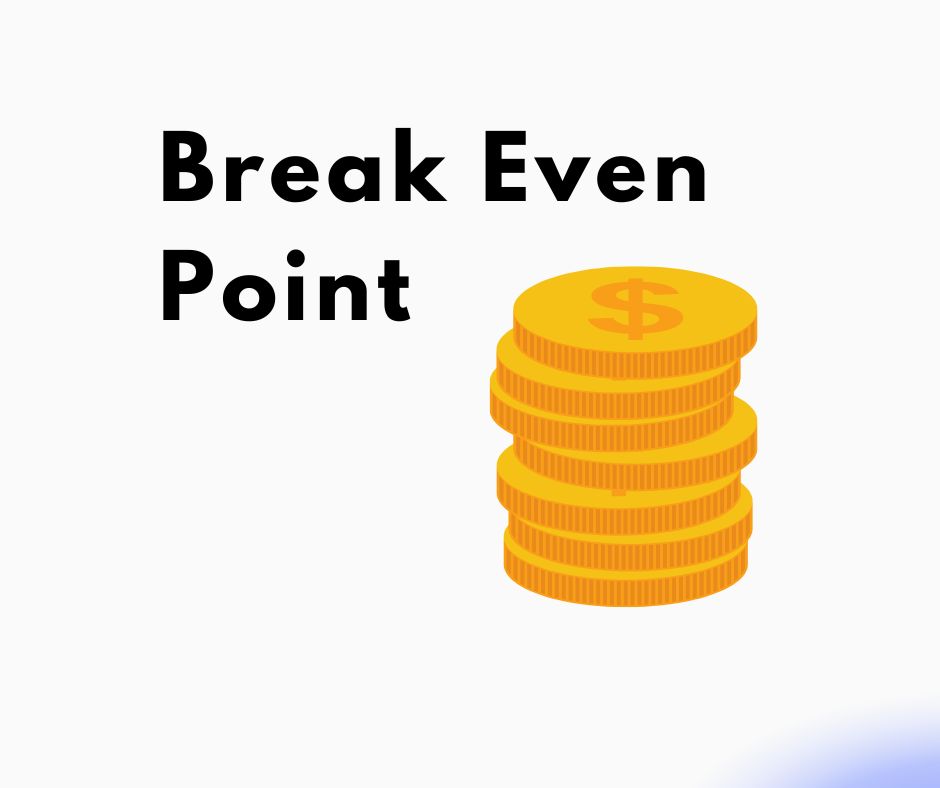Please enter the values to calculate your break-even point.
How to use this Break Even Point Calculator
- Enter the value of Fixed Cost for the desired production and sales period.
- Enter the value of Variable Cost and Sales Price Per Unit.
- The units of products and sales required to reach the break-even point are calculated automatically.
- Click RESET to reset the entered values and start a new calculation. (You can also start a new calculation without pressing RESET)
- This Break Even Point Calculator makes your repetitive calculation of break-even analysis simple.
What is Break Even Point (BEP)?
The break-even point (BEP) is the point at which total cost and revenue are equal, implying that your small business has no loss or gain. In other words, you’ve reached the point where the costs of production equal the revenues for a product.

The Even Point (BEP) is the volume of sales that makes total cost and total revenue equal and all the sales after the break-even generate profit. In other words, the break-even analysis helps to determine the units of product that must be sold to cover the fixed and variable costs associated with that production. The first step of calculating the break-even point is finding out the total fixed cost and the variable cost.
Then the break-even sales volume is calculated by using the expression: fixed costs/(price-variable costs per unit).
Benefits of Break Even Analysis
This simple expression is beneficial and holds valuable information for business owners and entrepreneurs.
- Break-even analysis tells us the number of sales required to compensate for the cost of doing business.
- The break-even point is essential to estimate the minimum total products required to produce.
- When compared with the market demand for the product, the break-even units suggest whether the business is profitable or not.
- If selling price is less than average variable cost, a firm shuts down production in the short run, incurring an economic loss equal to total fixed cost.
- If cost is equal to the sales price, production will never reach to the break even.
- It also helps to check the state of profitability during sales and suggests determining the degree of marketing required to reach the minimum sales.
- Break-even analysis helps to set the price of the product from the perspective of the producer.
- It helps to find out the optimal fixed and variable cost combination.
- At the point of break-even, there is neither loss nor profit.
- Break-even points can be used to calibrate the performance of different marketing strategies.
How do you calculate break-even analysis?
The break-even point is simply calculated by equating total revenue with total cost. If Q is the sales unit, P is the per unit price, and V is the variable cost per unit, then
Break Even Units
Total Cost (TC) = Fixed Cost (FC) + Variable Cost (VC) = FC + Q * V ——– (1)
Total Revenue (TR) = Q * P ——– (2)
If we equate (1) and (2), we get a break-even point of quantity.
FC + Q * V = Q * P
Q * (P – V) = FC
Q = FC / (P – V) ——– (3)
The expression (3) represents the formulation to calculate the break-even point expressed as:
Break Even Units of Sales (Q) = Fixed Cost (FC) / (Per Unit Price(P) – Per Unit Variable Cost(V) )
Break Even Sales
The difference between per unit price and per unit variable cost (P – V) is also known as Unit Contribution Margin (C).
Now, the expression (3) becomes
Q = FC / C
The revenue or total sales in which the break-even occurs is calculated by multiplying the break-even quantity (Q) with the per unit price (P).
Break Even in Sales ($) = (FC / C) * P
You can check these expressions and the BEP calculator above at the same time to validate your results.


